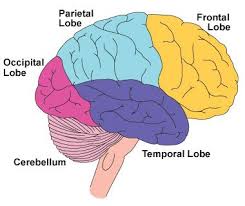There are four lobes of the brain in each cerebral hemisphere i.e. frontal, parietal, temporal and occipital. Each individual lobe is recognised to have particular key roles, however it is important to note that they do not function in isolation but as part of a wider system of neural networks.
Key roles of the frontal lobes:
